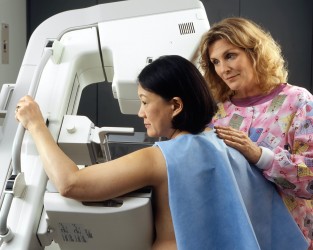You are looking at an archived version of our site. Please visit thepcc.org for a fresh, new experience!
You are here: Array » Geographic variation i ...
Geographic variation in overscreening for colorectal, cervical, and breast cancer among older adults

Jennifer L Moss, Siddhartha Roy, Chan Shen, Joie D Cooper, Robert P Lennon, Eugene J Lengerich, Alan Adelman, William Curry, Mack T Ruffin 4th
Abstract
Importance: National guidelines balance risks and benefits of population-level cancer screening among adults with average risk. Older adults are not recommended to receive routine screening, but many continue to be screened (ie, are overscreened).
Objective: To assess the prevalence of overscreening for colorectal, cervical, and breast cancers among older adults as well as differences in overscreening by metropolitan status.
Design, setting, and participants: The cross-sectional study examined responses to a telephone survey of 176 348 community-dwelling adults. Participants were included if they met age and sex criteria, and they were excluded from each cancer-specific subsample if they had a history of that cancer. Data came from the 2018 Behavioral Risk Factor Surveillance System, administered by the US Centers for Disease Control and Prevention.
Exposures: Metropolitan status, according to whether participants lived in a metropolitan statistical area.
Main outcomes and measures: Overscreening was assessed using US Preventive Services Task Force definitions, ie, whether participants self-reported having a screening after the recommended upper age limit for colorectal (75 years), cervical (65 years), or breast (74 years) cancer.
Results: Of 176 348 participants (155 411 [88.1%] women; mean [SE] age, 75.0 [0.04] years; 150 871 [85.6%] non-Hispanic white; 60 456 [34.3%] with nonmetropolitan residence) the cancer-specific subsamples contained 20 937 [11.9%] men and 34 244 [19.4%] women for colorectal cancer, 82 811 [47.0%] women for cervical cancer, and 38 356 [21.8%] women for breast cancer. Overall, 9461 men (59.3%; 95% CI, 57.6%-61.1%) were overscreened for colorectal cancer; 14 463 women (56.2%; 95% CI, 54.7%-57.6%), for colorectal cancer; 31 988 women (45.8%; 95% CI, 44.9%-46.7%), for cervical cancer; and 26 198 women (74.1%; 95% CI, 73.0%-75.3%), for breast cancer. Overscreening was more common in metropolitan than nonmetropolitan areas for colorectal cancer among women (adjusted odds ratio [aOR], 1.23; 95% CI, 1.08-1.39), cervical cancer (aOR, 1.20; 95% CI, 1.11-1.29), and breast cancer (aOR, 1.36; 95% CI, 1.17-1.57). Overscreening for cervical and breast cancers was also associated with having a usual source of care compared with not (eg, cervical cancer: aOR, 1.87; 95% CI, 1.56-2.25; breast cancer: aOR, 2.08; 95% CI, 1.58-2.76), good, very good, or excellent self-reported health compared with fair or poor self-reported health (eg, cervical cancer: aOR, 1.21; 95% CI, 1.11-1.32; breast cancer: aOR, 1.47; 95% CI, 1.28-1.69), an educational attainment greater than a high school diploma compared with a high school diploma or less (eg, cervical cancer: aOR, 1.14; 95% CI, 1.06-1.23; breast cancer: aOR, 1.30; 95% CI, 1.16-1.46), and being married or living as married compared with other marital status (eg, cervical cancer: OR, 1.36; 95% CI, 1.26-1.46; breast cancer: OR, 1.54; 95% CI, 1.34-1.77).
Conclusions and relevance: In this study, overscreening for cancer among older adults was high, particularly for women living in metropolitan areas. Overscreening could be associated with health care access and patient-clinician relationships. Additional research on why overscreening persists and how to reduce overscreening is needed to minimize risks associated with cancer screening among older adults.
Full Resource/Source: JAMA Network Open
Secondary menu
Copyright © 2024 Primary Care Collaborative



